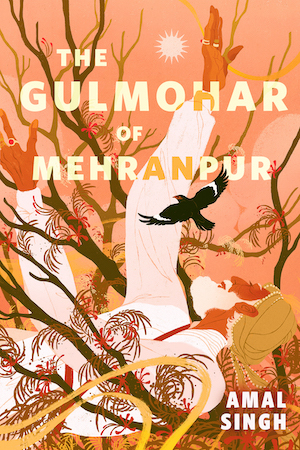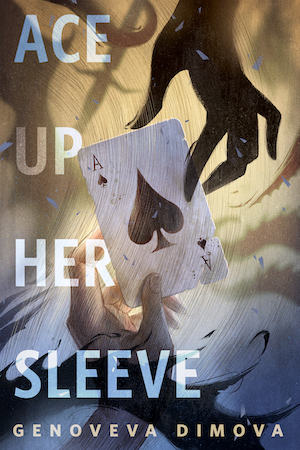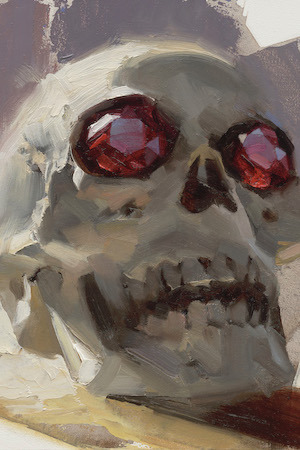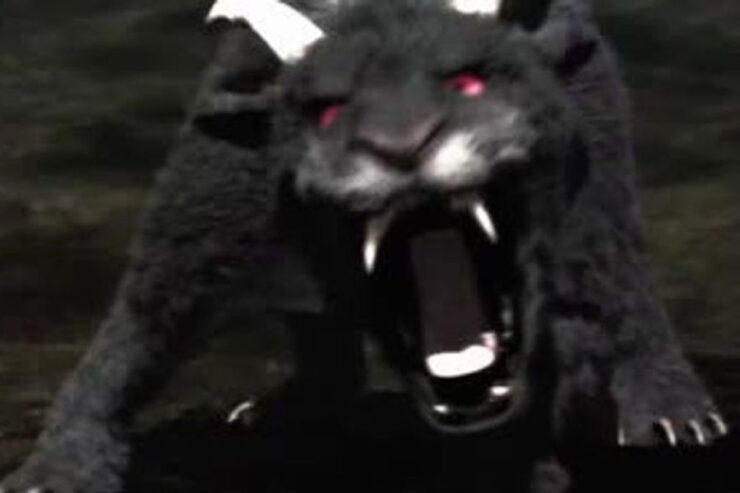I’m a little disappointed in the Ozark Howler episode of MonsterQuest. I’ve come to rely on them for going to the science, performing experiments, and demonstrating how and why a particular cryptid may or may not exist. Other episodes in the first season have done this, but here they don’t even go to the area. They interview some talking heads and feature a couple of witnesses, but that’s about it.
“It’s a real mix of known creatures into this unknown creature.” That’s how one of the talking heads describes the various reports and sightings. It’s a cat, mostly, but it has horns. Its eyes are red; it has a “death stare.” And there’s the cry, which is blood-curdling and terror-inducing.
The episode first aired in 2009 but seems to have been updated in 2019 under the title In Search of Monsters, and talks of sightings as recent as 2008. A woman sees a large, black, hairy creature crossing the road at night. A man sees “a black Howler” at the end of his driveway. A couple hear screaming in the woods around their property, and catch something on a game camera. A reporter mentions the photo of the cat-dog with the deer horns, but that’s dismissed as a hoax.
The episode progresses from most to least probable. The first suggestion is that it’s a large feline, Mountain lions have been sighted in the area, but animal experts maintain that these particular cats do not have a melanistic variant. Leopards and jaguars do, but neither is native to that part of the continent. Leopards are native to Africa. Jaguars range from South America into the far south of Arizona, but not as far north as the Ozarks.
There is the possibility of an escaped zoo animal or exotic pet. The problem with that is that both leopards and jaguars are tropical and subtropical animals. They’re unlikely to be able to survive the harsh winters of the region.
So maybe, the experts opine, it’s something more unusual. It might be a prehistoric survivor. In cryptozoology, that’s called a Lazarus taxon, a creature presumed to be extinct but found to still exist. (I’ll be talking about this, actually, in a later section of the Bestiary.)
There are a couple of candidates. One would be a creature called Panthera atrox, the American lion. It was very large, and supposedly the male and female were different colors. The male was “regular-colored,” i.e. light brown or tan, and the female was black. This species went extinct around the end of the Ice Age.
The other likely suspect would be the smilodon or sabertooth cat. This massive, muscular, shaggy animal was notable for its enormous canine teeth, but it’s presumed to have been grey or greyish brown and possibly spotted, rather than black. Whether it had a melanistic variant, the experts don’t know. They lean more toward the American lion in that case.
The episode moves away from physical manifestations at this point and focuses on the sounds it makes. People who live in the area maintain that they hear weird and unsettling sounds in the woods. But as one of the experts points out, the human imagination is a fertile and flexible thing. If it hears something unusual or untoward, it makes up stories and invents creatures that might have made the sounds.
I’ll add that when witnesses combine darkness, deep woods, and the cries of distant or unseen animals, they quickly move past the ordinary or the familiar to the weird and the terrifying. The mating cry of a female fox can sound like a human screaming in terror or a creature dying in agony. Mountain lions in search of mates will call back and forth, and their calls may seem to be coming from all directions at once.
I yelled at the screen at a couple of points. Whoever the sound engineer was, they seriously needed to be educated on the fact that mountain lions don’t roar. They can’t. Their larynges aren’t capable of it. They can purr. They hiss and growl. And they yowl and shriek.
Even a domestic cat can make an ungodly racket when it’s fighting or when it’s in heat. When I was a kid, we had a female Siamese who didn’t get spayed before her first heat. The noises she made were outright blood-curdling, and could be heard all the way down our very long driveway.
That was an eight-pound cat. Imagine that a cat twenty times that size can do when she’s looking for love.
Anyway. There’s no conclusion drawn in the episode. It moves on to the couple with the game camera. They recorded what seemed to be as many as three creatures calling back and forth—which indicates that if the Howler exists, there’s more than one of it. What seems notable to these witnesses is that the local dogs react to the howling. “The longer it goes on, the dogs become more and more intimidated.”
The expert called in to view the footage doesn’t commit to any species. He suggests that it may be something unknown. I’m not sure if that’s a responsible thing for him to do. He doesn’t test the audio, he doesn’t take it to a lab. Basically he just up and guesses.
To me the recording sounds more like wolves or other canines than cats. Awoo rather than a feline yowl or scream. But there’s no speculation as to whether these are wolves or coyotes, or possibly feral dogs.
The episode skips past the audio to a section of video that purports to be an image of the actual Howler. It’s blurry and pixelated. My eye, matrixing it, gives me something like a baboon. I don’t see a cat or a canine.
It may be full-on matrixing: the eye trying to create a pattern out of an image of leaves and branches. The animal expert says he sees a big cat, and we’re shown an image of a tiger. He can’t identify the creature, but it seems to me that he’s trying to fit the pixels to some sort of feline because that’s his area of expertise.
As with the audio, I’d like to have seen more testing by a less biased observer. Do the sounds correlate with any known animal’s call? And does the image portray something physical, or is it a trick of the eye?
Having failed to draw any empirical or scientific conclusions, the episode moves on to the paranormal. Black cats historically are bad luck, we’re told. They’re “inherently evil.” They’re associated with witchcraft and the demonic. Maybe they’re shapeshifting witches. Or at least a witch’s familiar.
There’s even a historical connection. Well, not exactly, but a witch in the 1500s supposedly had a demonic cat named Satan or Sathan, and he apparently was huge and had horns. So maybe somehow that legend, or one very similar to it, made it into the Ozarks with European settlers.
Witchcraft was a frequent practice among the colonists. Maybe the Howler was, or is, a witch’s familiar, or a witch in animal form. Or else it’s a demon—and then we have to ask, does it serve the witches, or do the witches serve it?
By this point the show has moved away from cryptozoology and into the world of myth and magic. One thing it does stress, however, and that’s the fact that there has never been a documented attack on a human. The Howler is scary, but it doesn’t appear to be dangerous.
There is one possible exception to this. That’s the concept of the “death stare” and the idea that the Howler is a harbinger of death. Like the banshee, if it howls for you, you’re fated to die. But that’s a minor part of the whole story. Mostly, the Howler is a cry in the night and a shadow in the woods. The rest is in the minds of the humans who hear and glimpse it.










